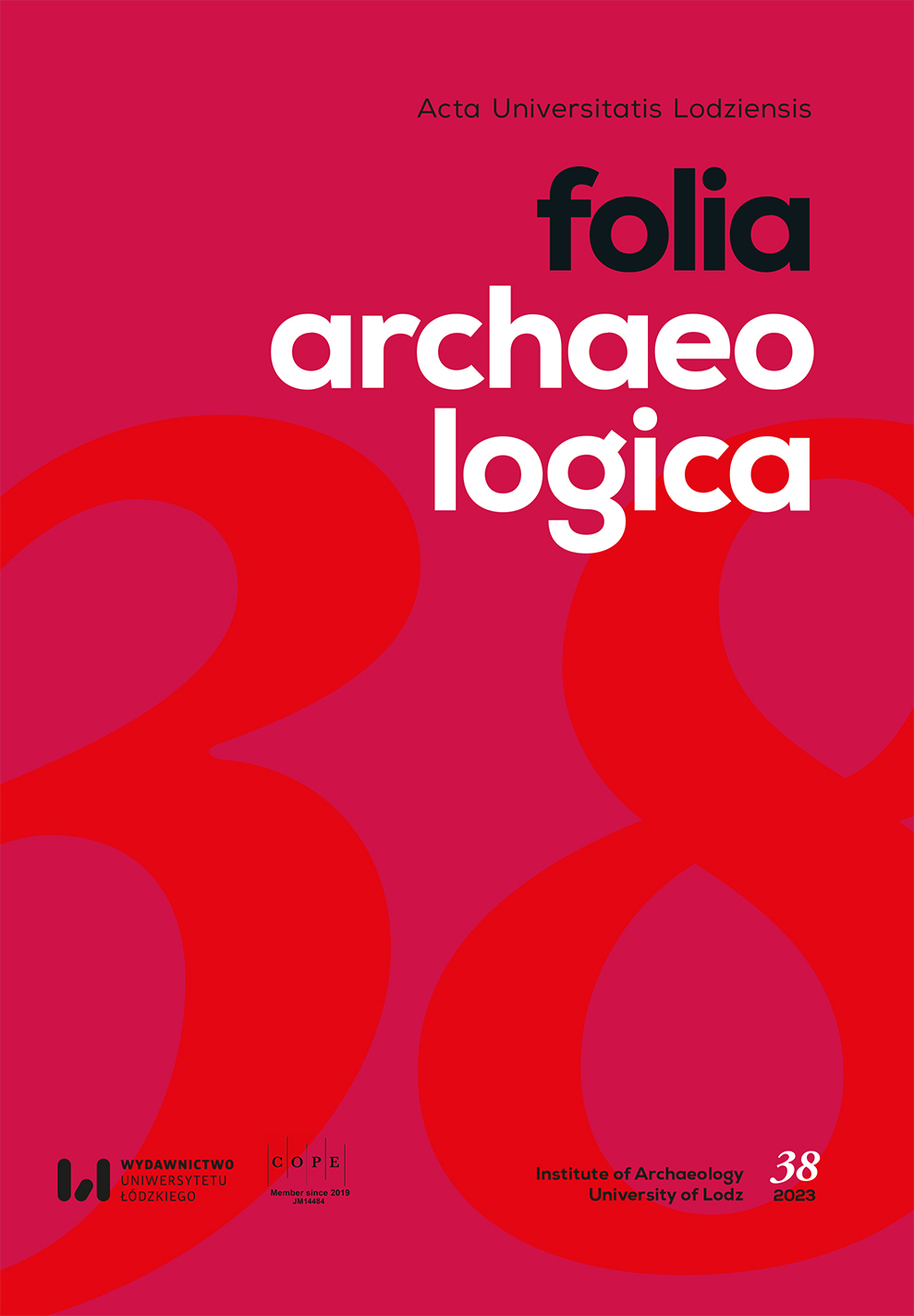Capellam Sancte Crucis in ipsa Luchicia Kaplica Św. Krzyża w średniowiecznej Łęczycy. Stan badań archeologicznych i perspektywy poznawcze
Capellam Sancte Crucis in Ipsa Luchicia Chapel of the Holy Cross in Medieval Łęczyca The State of Archaeological Research and Cognitive Perspectives
Author(s): Zbigniew LechowiczSubject(s): History, Archaeology, Local History / Microhistory
Published by: Wydawnictwo Uniwersytetu Łódzkiego
Keywords: medieval Łęczyca; the Chapel of the Holy Cross; archaeological excavation
Summary/Abstract: The aim of this article is to situate the sites on the west bank of the Bzura River, which have been known for a long time and have been studied in recent years, within the space of the Tum–Łęczyca agglomeration. Łęczyca–Emaus and Kępa Łęczyca–Dzierzbiętów sites were explored by the team of the Institute of Archaeology and Ethnology of the Polish Academy of Sciences in Łódź in the middle of the previous century. In the twenty-first century, further excavations were carried out at these sites. Attempts were made to present the results in a broader settlement context and to assess the current state of research. The main problem is the establishment of the number of functioning open settlements and their location, and the role of sacred structures – temples and cemeteries in the naturally and politically determined topography of the early medieval agglomeration.The Chapel of the Holy Cross in the Old Town appears in written sources in 1235, is mentioned in documents of 1299, 1323, 1345, and 1396, and appears in written sources in 1550. As an abandoned (deserta) auxiliary church, it was mentioned in the context of the inspection of the archdeaconry of Łęczyca in 1759. In the 1830s, a chapel was erected. By the twentieth century, there was only a cross here, located on the site of the former church, adjacent to a pond or a spring. It was the destination of the last “Emmaus” walks and survived until the Second World War.In 1235, archdeacon Gumpert of Cracow gave the Cistercian monastery in Wąchock the village of Błonie, situated “beyond Łęczyca”, along with the Chapel of the Holy Cross, located in “Łęczyca proper”, and everything that belonged to it. The donation received the approval of Count Mściwój, castellan of Oświęcim, brother of the archdeacon. Judging by the fact that the property right was held by two brothers, it was the result of inheritance from their father or mother. This makes it possible to link the chapel’s foundation to the twelfth century.Research in 2014 confirmed that the so-called Emmaus cemetery is the church cemetery of the Old Town Chapel of the Holy Cross. The non-invasive methods used before the excavation verification were very promising. The resulting image was highly suggestive, but after invasive exploration it proved unreliable. It was disturbed by deposited rubble and ferromagnetic waste, which made the quality of the data obtained insufficient for architectural spatial reconstructions. In the area excavated, it was not possible to combine the stone finds into a convincing foundation projection of the structure. They were not in their original locations, having been spread over many years of ploughing. It seems certain that the chapel was built of wood in all phases.Elements of the spatial analysis for the location of the chapel are the layout, density, and dating of the burials. Judging by the furnishings, the oldest burials occurring in a regular arrangement were in the pits of A. Abramowicz and pit 1 of T. Poklewski. To the north of them, one should infer the location of the chapel. This location is confirmed by the trace of the cross found in 2014 and the concentration of large boulders. The documented ossuaries and traces of discontinuous spot foundations across skeletal burials are probably the remains of several modern chapels or cemetery shrines. There is a chance to specify the projections of further structures with access to archival documentation, although a more reliable solution would be open-area excavations.
Journal: Acta Universitatis Lodziensis. Folia Archaeologica
- Issue Year: 2023
- Issue No: 38
- Page Range: 101-140
- Page Count: 40
- Language: Polish

